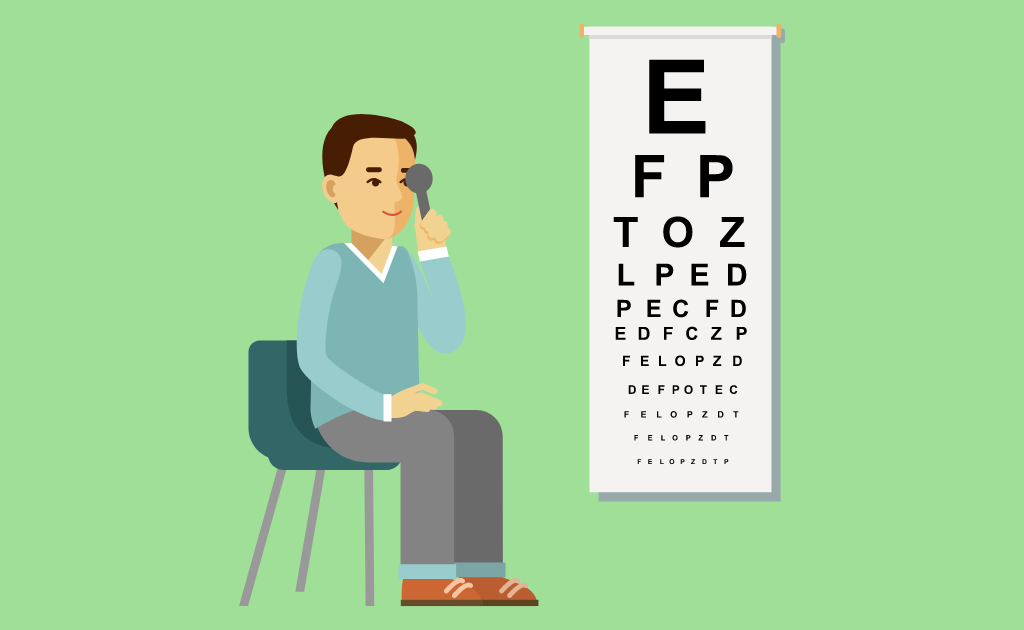
As we age it’s natural to experience some level of decline in our ability to think, see and hear. But it can be understandably worrying when the decline in these functions begins to interfere with daily life. Dementia is the general term for a collection of symptoms such as decline in memory, reasoning, or other cognitive skills. Recent research has shown that there may be a connection between vision problems and dementia.

Dementia is the term used to describe changes in the areas of the brain associated with memory, language, and decision making that make it difficult for people to complete basic daily tasks and impair independence. Dementia symptoms will often affect a person’s behaviour, feelings and relationships.
While some cognitive decline is natural as we age, the serious decline of dementia is not a normal part of aging. There are multiple types of dementia, the most common and well know is Alzheimer’s disease which accounts for 60 to 80% of cases.
Alzheimer’s disease is the most common type of dementia. Between 60 to 80% of cases of dementia are caused by Alzheimer’s disease. Alzheimer’s is a progressive chronic disease, which is usually diagnosed after the age of 65 years old. It is caused by high levels of certain proteins inside and outside brain cells which can be detrimental to cell health and their ability to communicate with each other.
The hippocampus is typically the first region of the brain to be affected. This part of the brain is important to learning and memory. This is why memory loss is one of the early symptoms of Alzheimer’s, however there is growing evidence that vision problems may in fact be one of the earliest signs of the disease.
Researchers have found that vision issues may be an early sign of Alzheimer’s disease. Our eyes can provide insights into the health of our brain. Studies have shown that one of the toxic proteins known as amyloid beta, can form plaques on the retina and in the lens of the eye. These plaques also form in the brain and are considered to be one of the primary causes for Alzheimer’s.
Visual impairments have been linked to an increased risk of dementia. Previous research has shown that individuals with dementia often have visual processing defects, even early in the condition. Researchers now believe that loss of visual sensitivity could predict Alzheimer’s disease.
Researchers at Loughborough University found that a low visual sensitivity test score can indicate future dementia risk, on average 12 years before diagnosis. They found that individuals with lower scores on the simple and complex visual sensitivity tests had a higher probability of future dementia diagnosis. These tests are designed to assess visual processing speed and reaction time.
When the areas of the brain associated with vision are damaged a person may begin to notice eyesight problems. This is because a persons ability to detect, process and interpret visual information accurately and efficiently will start to worsen. People with at a higher risk of dementia may have visual issues even with healthy eyes as the issues are caused with the processing of the visual information in the brain. Our eyes are primarily dedicated to focusing and detecting light from the environment.
The following aspects of visual processing may be affected:
A loss of visual sensitivity may result in someone encountering more difficulties when trying to process visual information. They may gradually start to struggle with recognizing faces, reading, finding objects, or navigating their environment. It is important to remember that there are many causes of sight loss including eye conditions, and normal aging of the eye.
As we age our eyes change and naturally our sight will often get worse. Many of the indicators identified in the study as being linked to dementia can also occur as a result of age-related vision changes or other eye conditions. Scientists suggest combining visual processing tests with other neuropsychological tests to potentially improve the identification of future dementia risk.
This is why you should always consult with your healthcare provider if you are concerned about symptoms you are experiencing. They can carry out a range of tests to better understand what you are experiencing. For most adults it is recommended to see an optometrist every 2 years, or 1 year if you are at risk of eye conditions. If you are over 65 years old it is recommended to get you eyes tested annually.
Resources:
Begde A, Wilcockson T, Brayne C, Hogervorst E. Visual processing speed and its association with future dementia development in a population-based prospective cohort: EPIC-Norfolk. Sci Rep. 2024 Feb 29;14(1):5016. doi: 10.1038/s41598-024-55637-x. PMID: 38424122; PMCID: PMC10904745.
